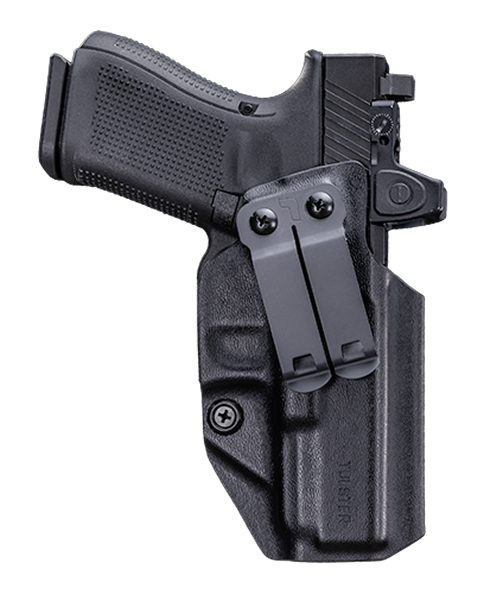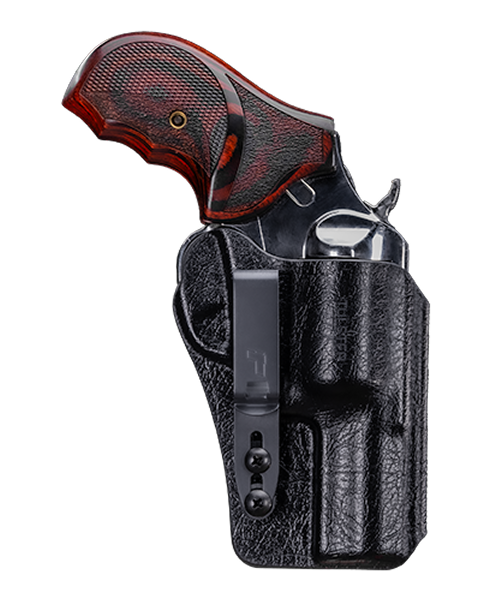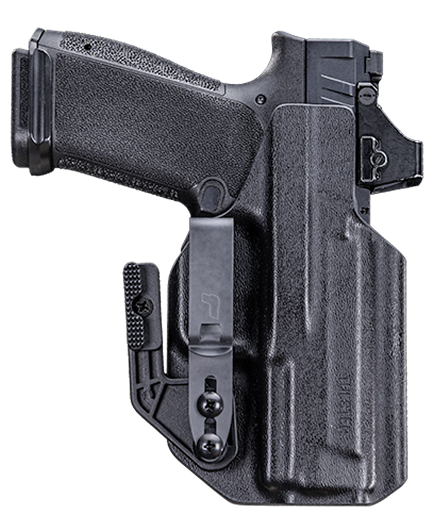Red Dot On Everyday Carry?
Posted by GunSpot, Tulster on Jun 7th 2021
In recent years we have all seen an uptick in how many people are carrying red dot optics on their pistols, and it seems like it won't ever slow down. This is a good thing. As we move forward, if manufacturers do not include optic cut slides on their pistols, they will become a thing of the past. A recent firearm announcement that made the right step was the Glock MOS. How Glock did it right with the MOS was that every model has an optic cut from the factory. Each model has a flush plate that looks like just part of the slide for those that are dedicated to using only irons. But they added the extra value of already having an optic cut.
The question is should you have a red dot optic on your everyday carry pistol? The answer to that is... yes! There is really no reason not to have one if you have co witnessing iron sights. With co-witness iron sights, you get to have the best of both worlds. You get to have a single focal point aiming in the red dot, and then you get to have the insurance of your irons if your dot fails or isn't bright enough in the current setting.
Single Focus Point
How is a red dot superior, and why do we recommend it? First of all, it is a single focal point. What that means is you're no longer trying to focus on your front sight and focus on your target. With the optic glass and the way the dot shows up to your eye, you can just draw and present onto the target and focus on the target only. If your presentation is good, you will see the dot just floating on your target. If you are shooting with irons and you present, you usually focus on your front sight, which takes your eye focus of the target itself.
Faster sight alignment
The second reason is red dots are faster on presentation. When we are under pressure and in a hurry, we usually grab our pistol and present out in a hurry, and our sight alignment is just trash. Sometimes our front post is way too low, or it's way too high or our front sight is off to either side and we don't get those perfectly aligned sights. With the red dot, as long as you see the dot on your target, you can be sure that's your point of impact. It's much harder to line up two things on a target than it is to line up one. We would never dream of taking a shot with bad sight alignment, but with a red dot, you can shoot at the target as long as the dot is anywhere in the optic lens and the dot is on the mark.
Red dots on your everyday carry make you faster, safer, and more accurate. Besides cost, there is really no reason not to add a red dot to your carry gun. When picking one out, do your research and make sure your dot has a good reputation.
Optic Ready Holsters
Once you've picked out the right firearm to add a sight on, the last step before making it your everyday carry is finding the perfect holster. Considering that a sight increases the size of your firearm, it is essential to go with a low-profile holster that contours to your body while also being comfortable. Additionally, you will need to have a holster cut precisely for optics for the firearm to fit correctly. Here at Tulster, we built the OATH holster with optics in mind. With the preinstalled Mod-Wing, concealment is brought to the next level, pushing your firearm against the backside of your belt, reducing printing. Lastly, and most importantly, the optic cut on the OATH allows for virtually every known optic, from RMRs to SROs, to fit like a glove.
For more information on the OATH, click here
To see Gunspot’s review of the OATH, click here.
DISCLAIMER: This content is for general educational and informational purposes only. Readers and viewers are responsible for knowing and understanding all appropriate local, national and international laws relating to self-defense, reasonable force, and the use of any and all weaponry, acting in accordance with all applicable laws, at all times. Neither Gunspot or Tulster assume any responsibility for the use or misuse of information or instruction. We encourage all firearm owners to seek out professional in-person instruction. No video or blog replaces in-person training with qualified professionals to ensure you learn and train safely









